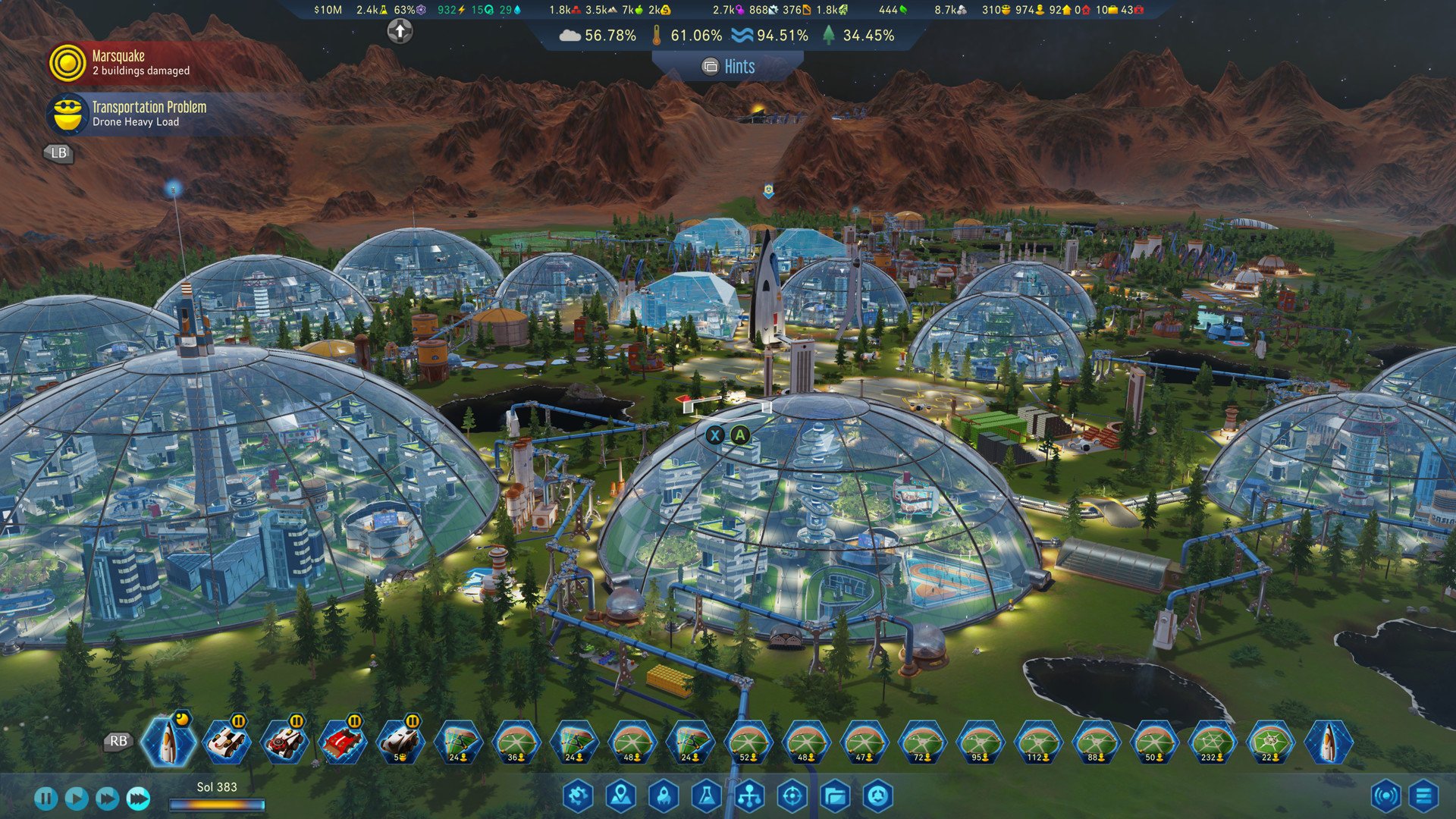
Surviving Mars is an excellent sci-fi strategy game where you're tasked with the colonization of Mars. In Surviving Mars, you have to manage your colonist's hunger, oxygen intake, and even their sanity, as you navigate the perils of colonizing the dead, red planet. Or, perhaps it's not so dead after all.
With the latest DLC from Haemimont Games, you can now start to terraform Mars, improving the soil quality, setting up magnetic field generators, and creating breathable air. The "Green Planet" expansion adds an additional layer of complexity to the addictive management sim, offering an optimistic glimpse at what the future may hold for humanity if we don't destroy ourselves beforehand, that is.
Is it worth the $20 price tag though? Let's take a look.
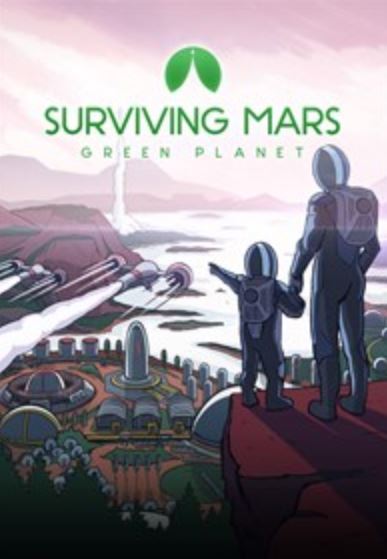
$20Bottom line: Green Planet is an awesome addition to Surviving Mars, but it puts a spotlight on some vanilla features that could use some love.
For
- Well-designed with dynamic strategy opportunities
- Attractive visuals with refreshed cosmetic options
- New hazards add complexity for challenge enthusiasts
Against
- Animal farms split into a separate $4.99 DLC feels a bit cheap
- Weak base edition features could still use some love
What you'll love about Surviving Mars: Green Planet
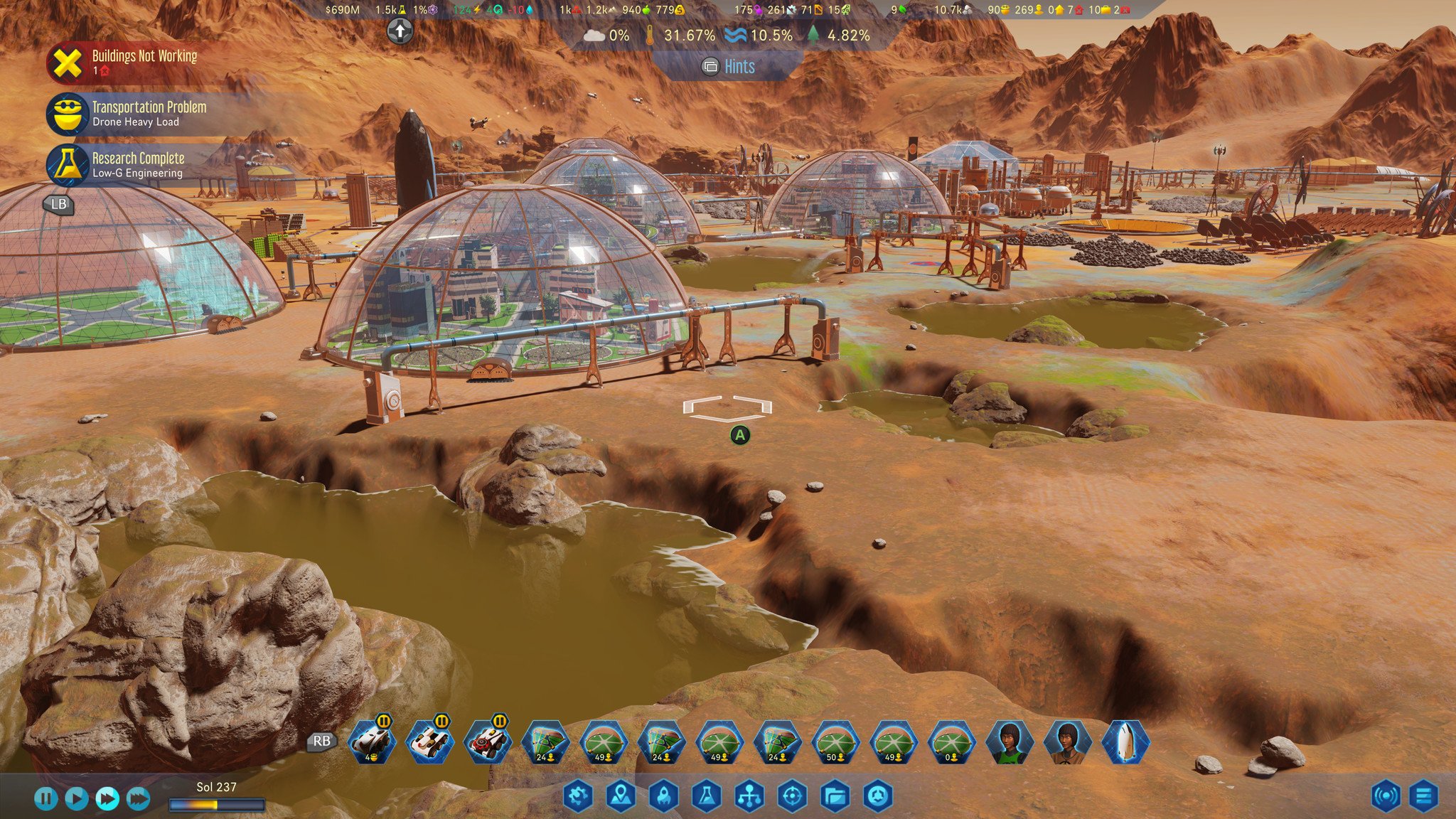
Surviving Mars: Green Planet is a pervasive expansion that adds an additional metagame on top of the existing formula. Now, when you play Surviving Mars with Green Planet installed, you'll see an additional UI underneath your resources bar that determines your progress on improving Mars' atmosphere, temperature, atmospheric water supply, and vegetation quality. In order to improve each of these statistics, as you march towards making Mars truly habitable without domes, you're granted a range of new buildings and facilities that come with additional management complexities.
To increase the vegetation of Mars, you'll need to start using seed spreading facilties that spread lichen spores onto the planet. You can also start pouring water onto the surface of Mars in the form of lakes, which come in various shapes and sizes. Naturally, you'll need to balance out your colonist's own water needs against simply pouring it out onto the dirt, and cold waves if you're playing above the equator can add additional complexity to this process.
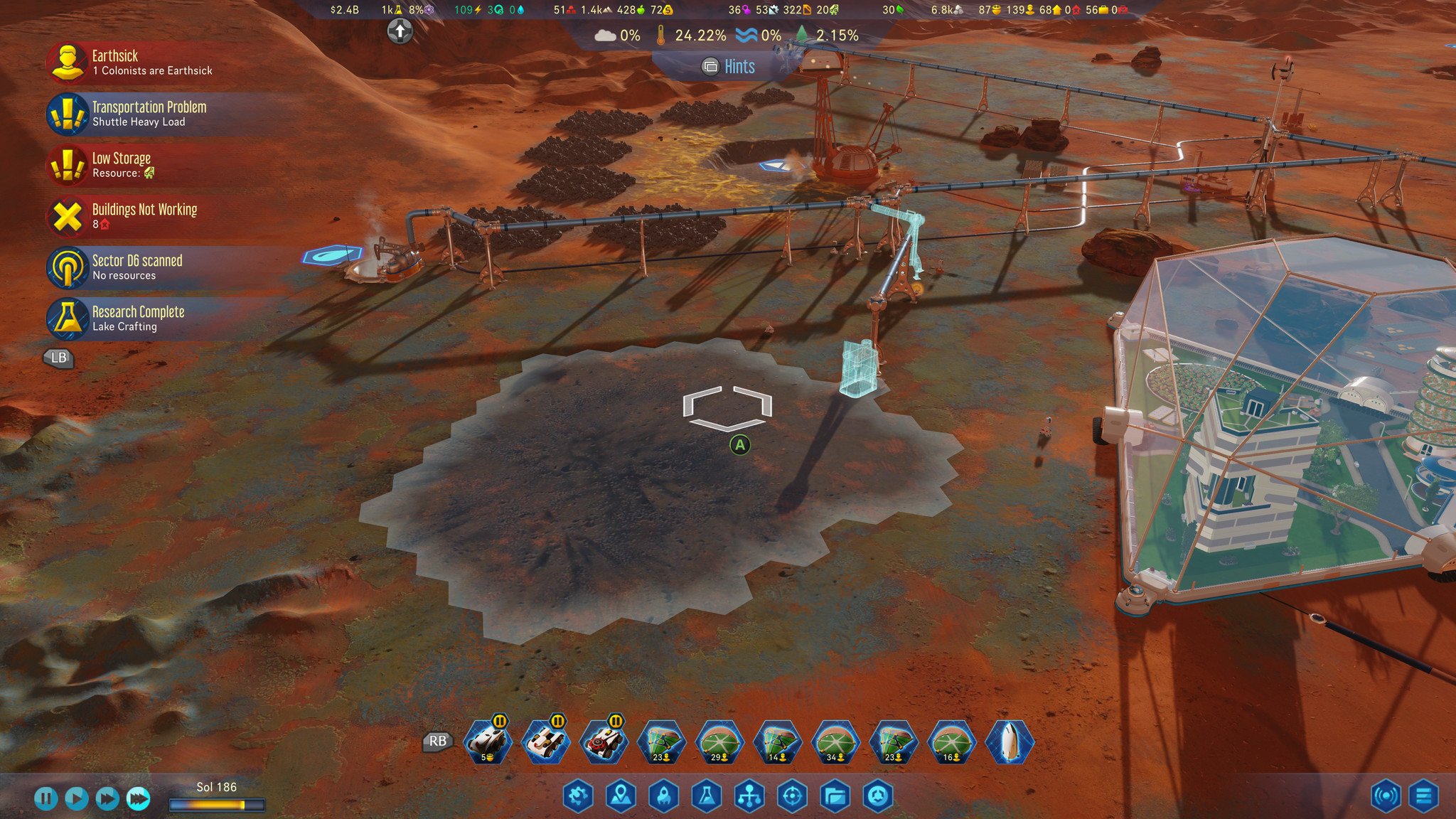
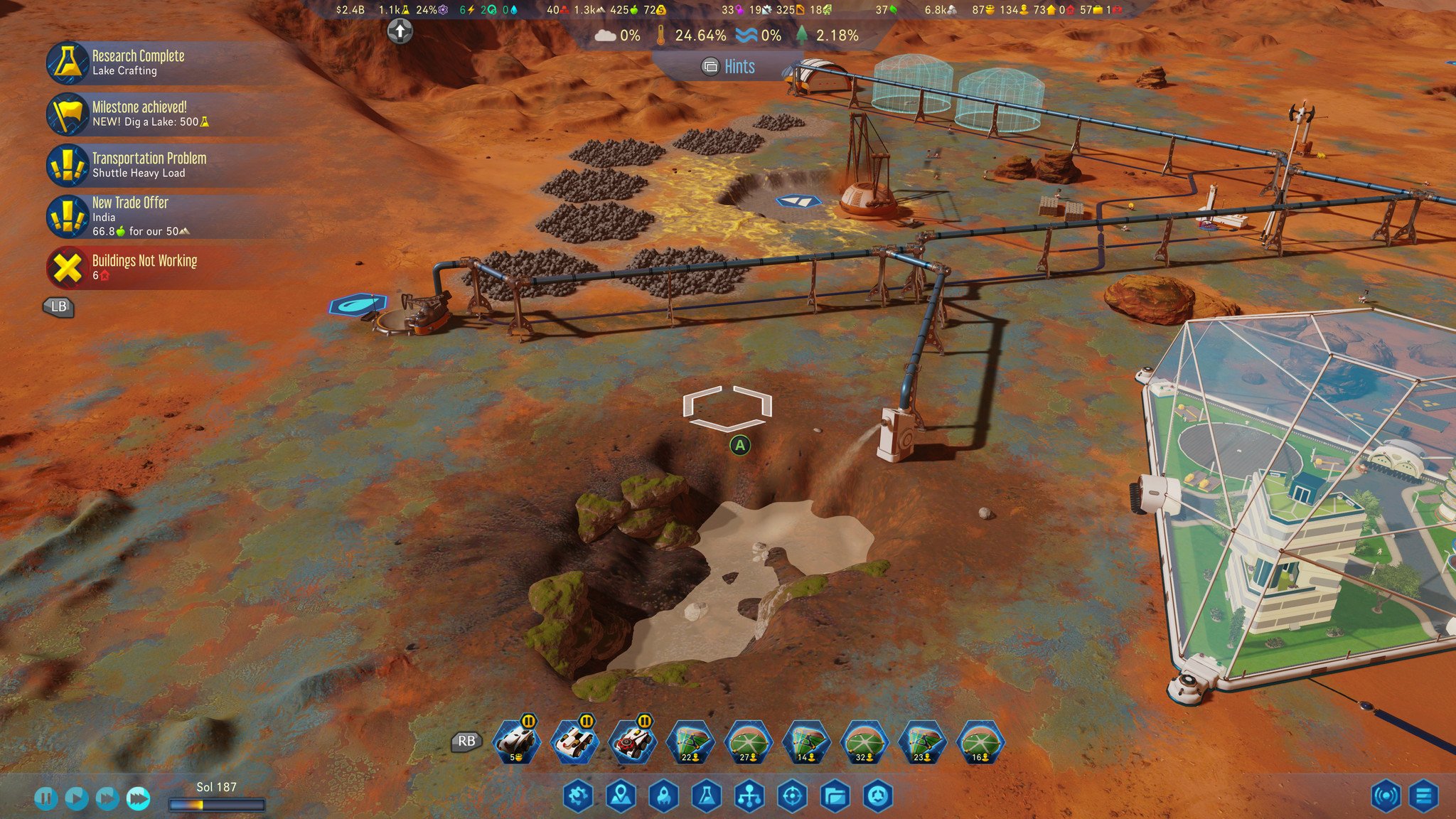
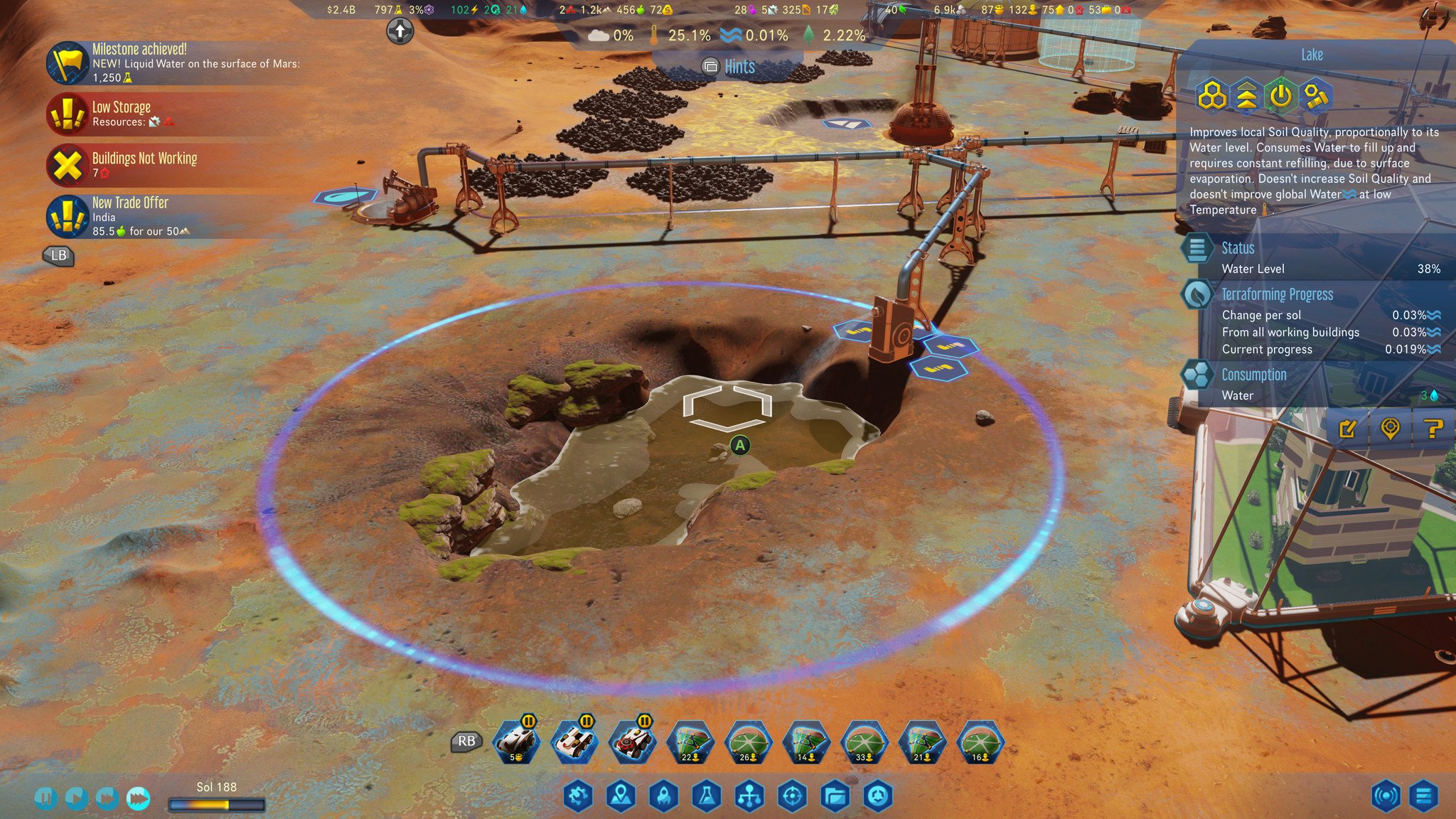
As you gradually begin to seed Mars with water and spores, you can start pouring greenhouse gasses into the atmosphere to prevent the water from simply evaporating into space. Mars doesn't have a magnetosphere anywhere near powerful enough to protect itself from the harmful radiation from the Sun, but you'll also be granted buildings and satellite facilities to generate an artificial magnetic field to aid with this process.
New landscaping tools allow you to clear out uneven ground for planting open air farms, while also creating ramps between different levels of elevation for access without building expensive tunnels. "Waste rock" becomes a lot more useful as a resource too, able to be processed in greenhouse gas factories to help release beneficial atmospheric compounds into the air.
As your colony grows and your terraforming progress increases, you'll gradually start to see the barren red planet fill out with water, greenery, and get warmer. Some hazards like cold waves will subside and become easier to manage as Mars gets warmer, but new hazards like toxic rains and Marsquakes will become more common place.
The additional layers of strategic complexity coupled with creative opportunities offered by Green Planet make it a rock solid $20 purchase. Some of the flaws with Surviving Mars: Green Planet are perhaps more attributable to Surviving Mars itself, rather than the DLC, though.
What you'll dislike about the Surviving Mars: Green Planet
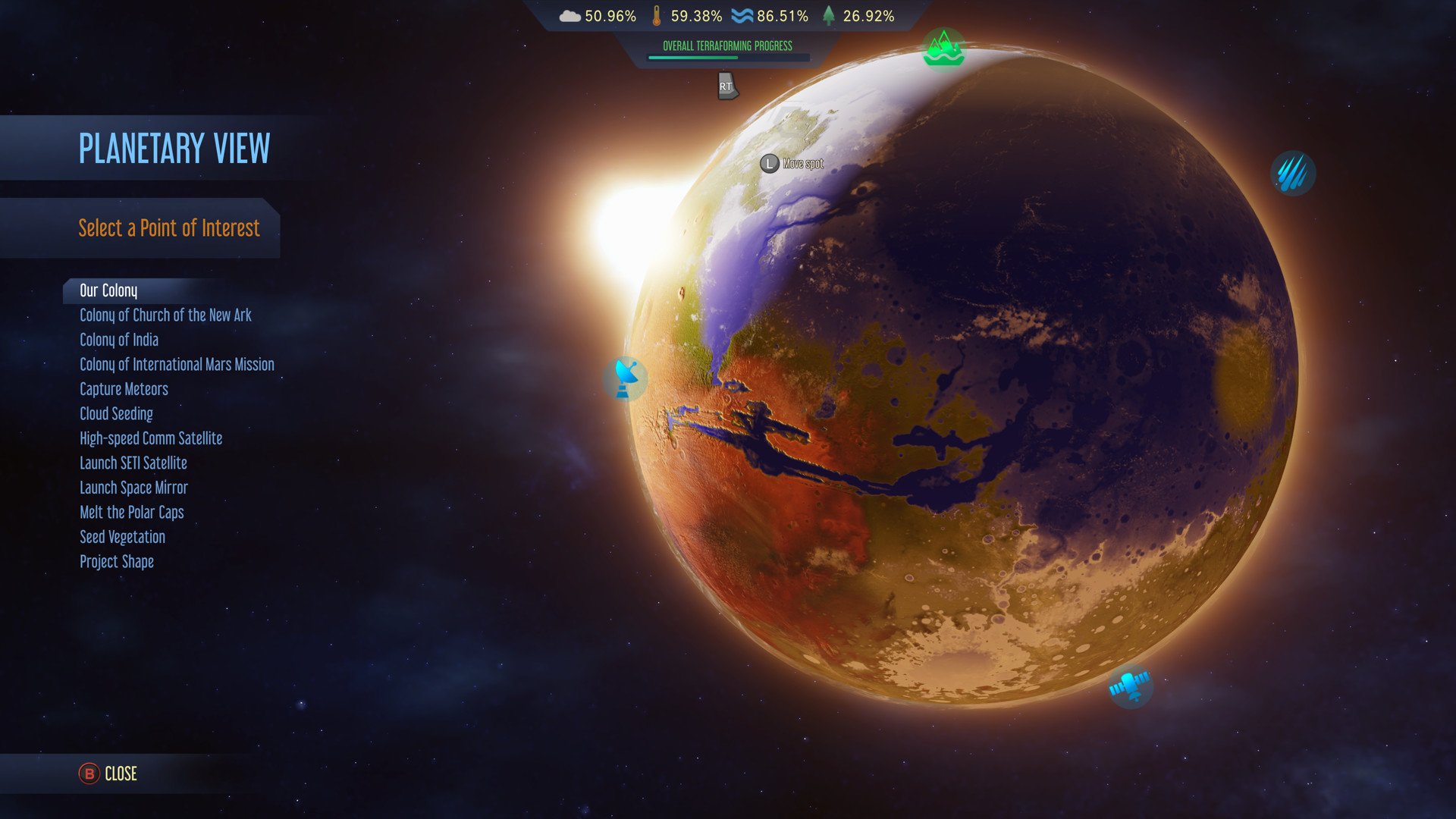
Surviving Mars: Green Planet is a great piece of DLC, and the problems largely amount to problems with the base game, rather than the expansion.
The planetary view gives you access to other A.I. colonies attempting to fight for an existence on the red planet. A lot of the interactions with these other colonies is largely useless, and doesn't really help save for the occasional offloading of surplus resources via trading. They don't tie into the Green Planet expansion at all either, making them feel a bit tacked on. Many of the plentary missions to seed resources or launch satellites aren't very interesting either, and the menus that govern their selections are very sluggish, especially on Xbox One.
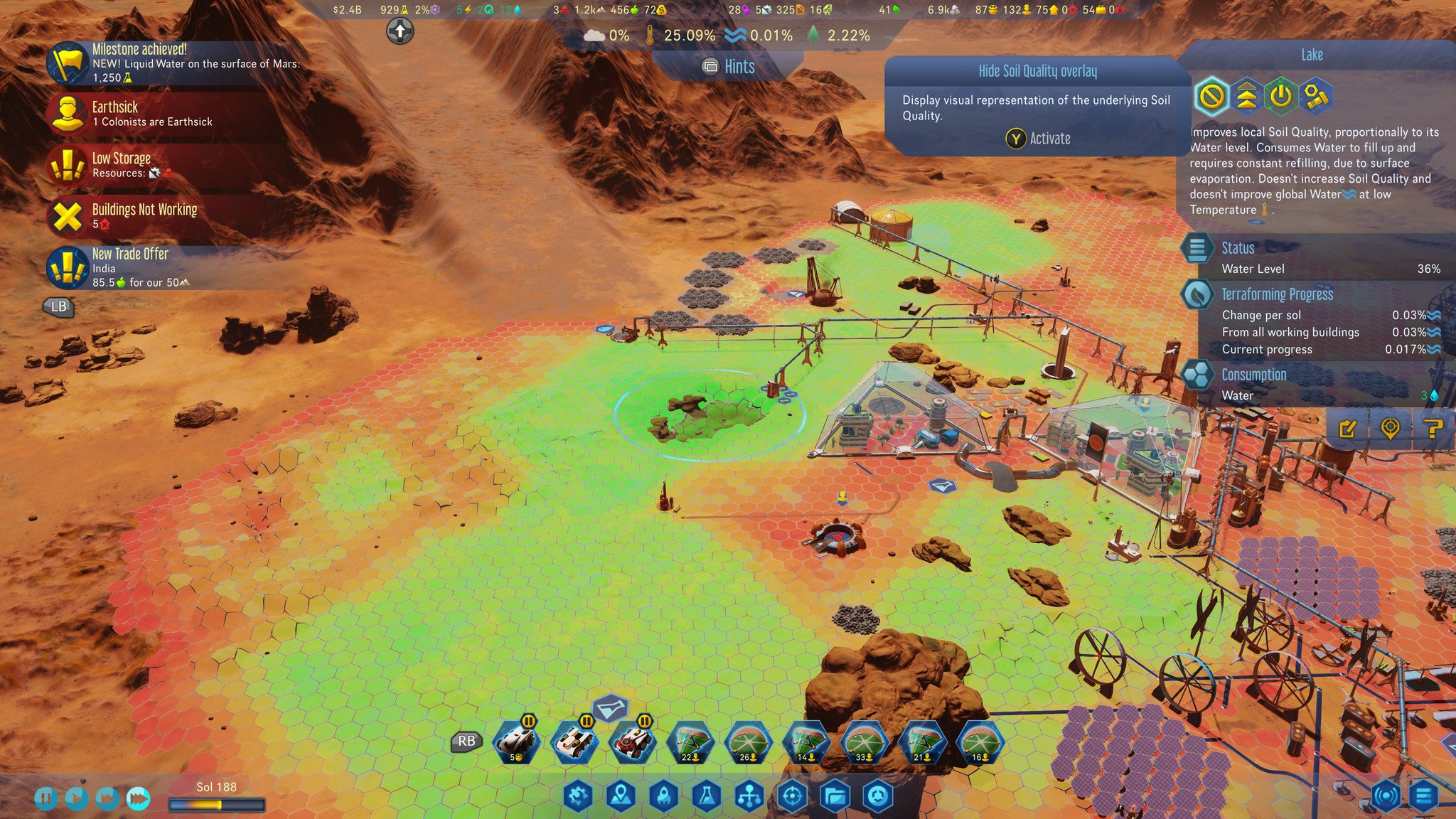
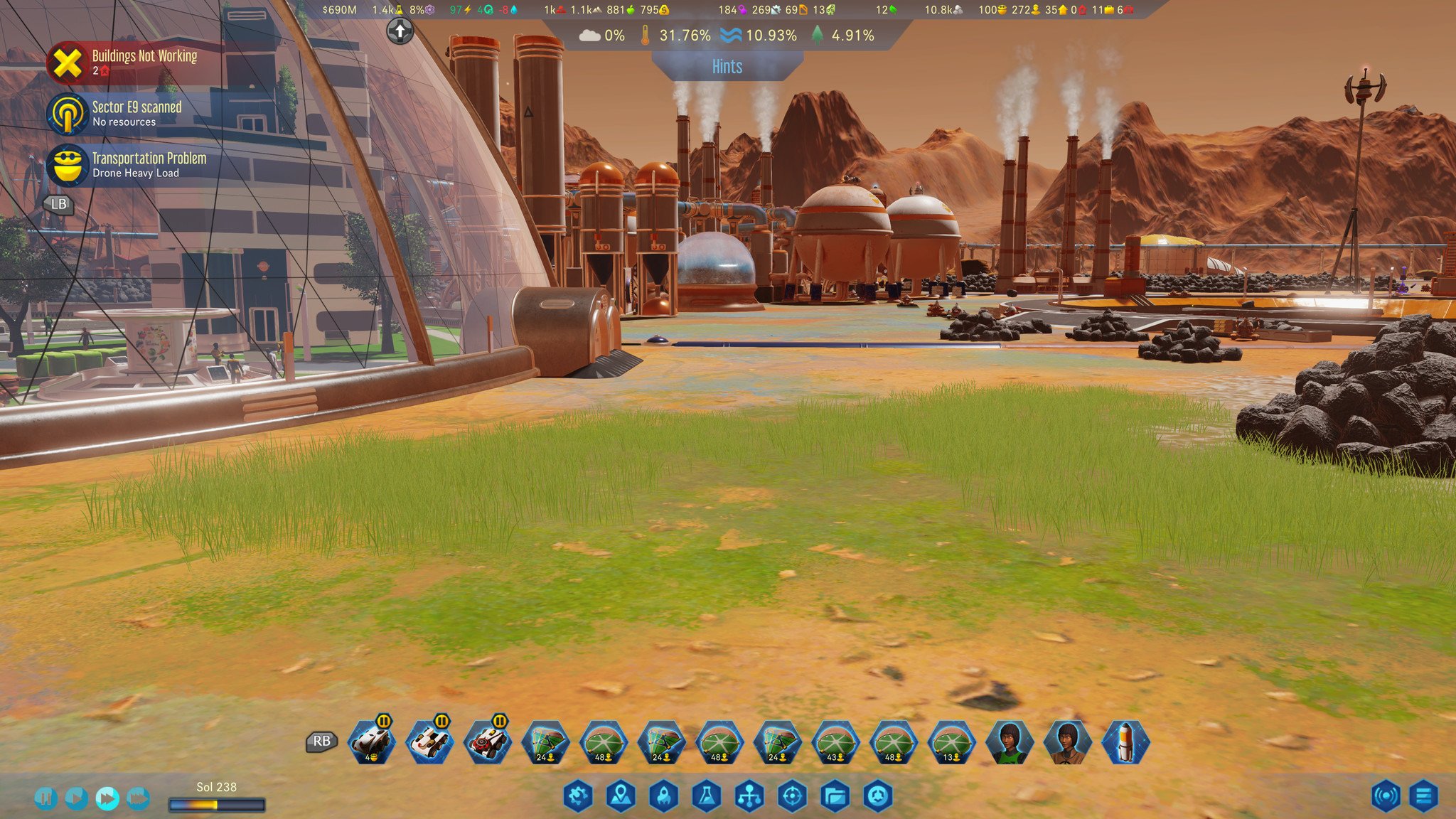
There are a few minor annoyances that Haemimont could easily fix with a patch as well in the future. Rampant vegetation like trees and so on can make it hard to see where you're laying cables and so on, since it's all hidden by trees.
I think Haemimont could have done a bit more with some of the opportunities afforded by a green planet. Mutant low-gravity alien wolves roaming the martian forests? Dormant creatures stirred by the pervasive environmental upheaval? There's a lot of foundation here for future content, for sure, but the weak integration between Green Planet and other features, like the Space Race DLC, could have been far better implemented.
Finally, it's a bit annoying that animal farms comes as a separate $5 DLC on top of the Green Planet $20 expansion, or purchaseable together for $23. Just feels like needless nickle and diming, particularly since they're launching together.
Should you buy the Surviving Mars: Green Planet?
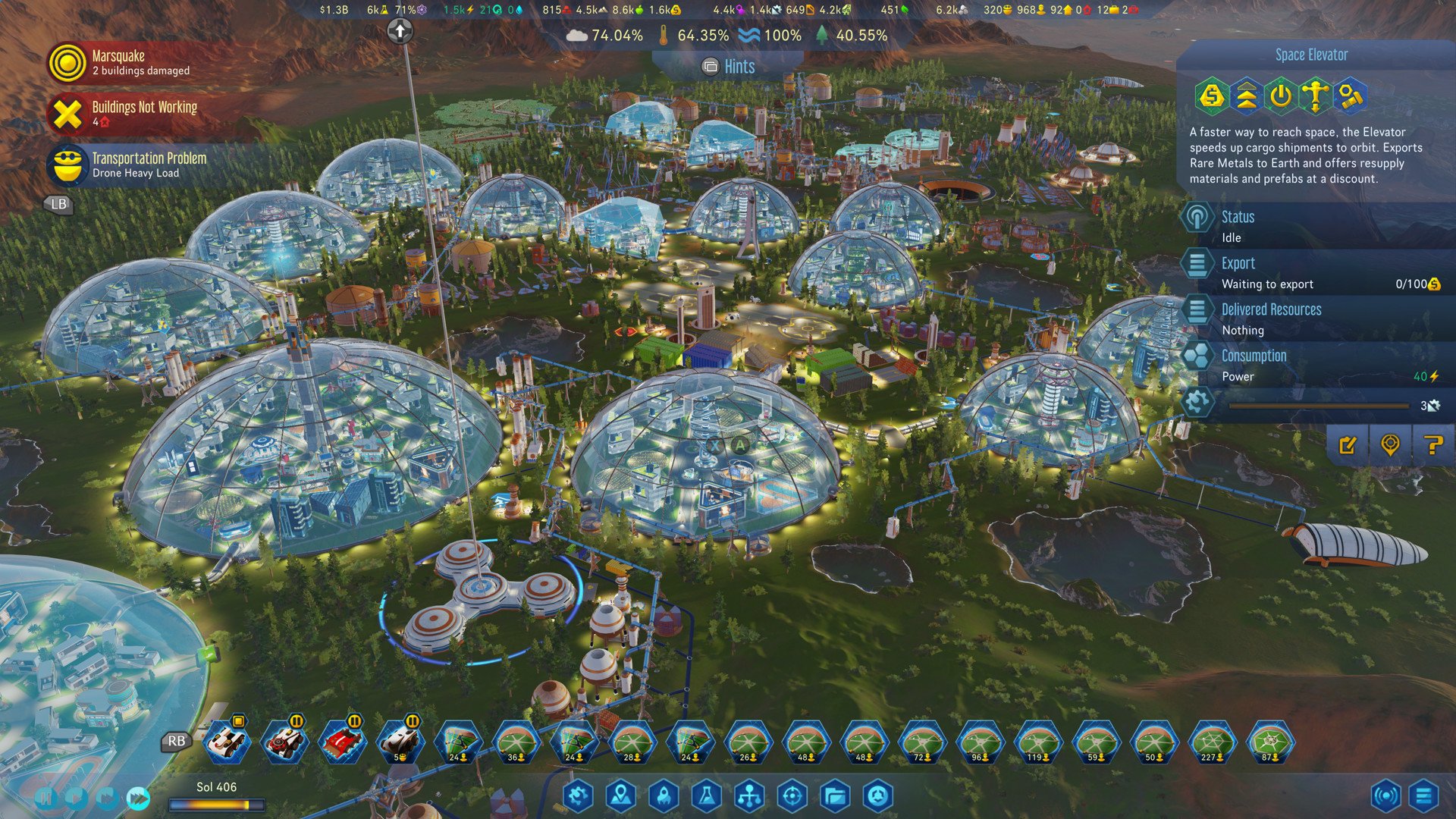
Green Planet is a great DLC overall which adds an air of optimism to the gritty colonial sci-fi game. The idea of being able to colonize planets beyond our own is a tantalizing reality that may never come to pass, but at the very least, we can experience it here in what is easily the best space colonization simulation game available on Xbox One today.
It's a bit annoying that the "Project Laika" animal farming DLC is separated from the main package, but it doesn't stop Green Planet itself being a great addition to the base game. If you fancy yourself a martian gardener, definitely pick this one up.

Jez Corden is the Executive Editor at Windows Central, focusing primarily on all things Xbox and gaming. Jez is known for breaking exclusive news and analysis as relates to the Microsoft ecosystem while being powered by tea. Follow on Twitter (X) and Threads, and listen to his XB2 Podcast, all about, you guessed it, Xbox!
